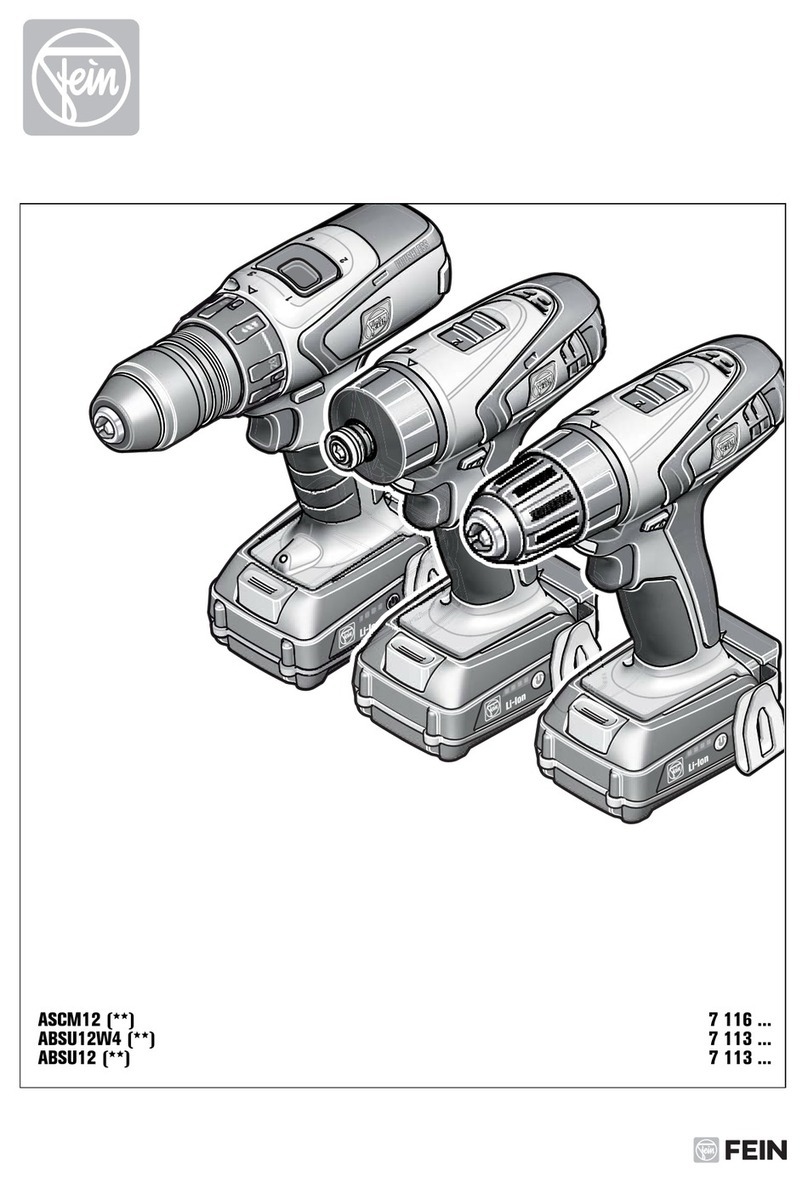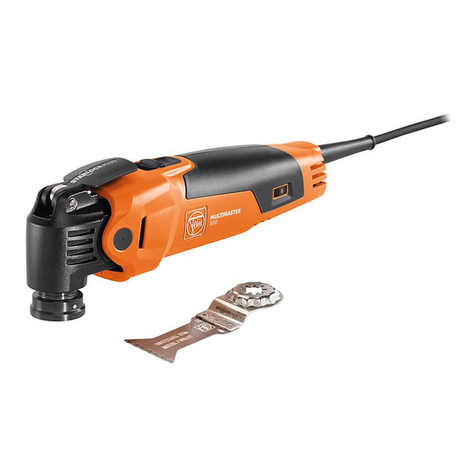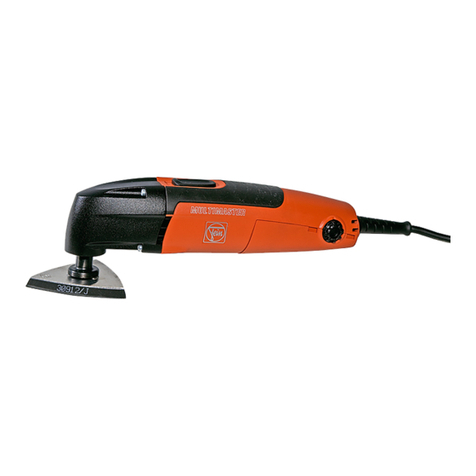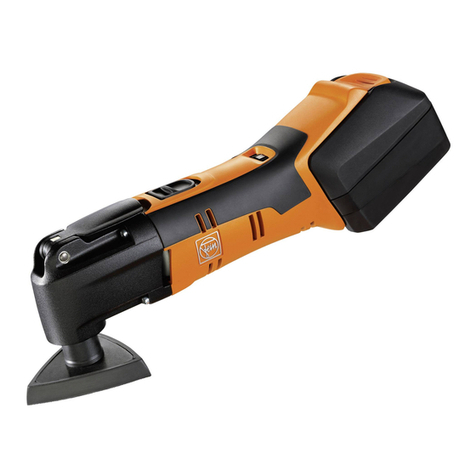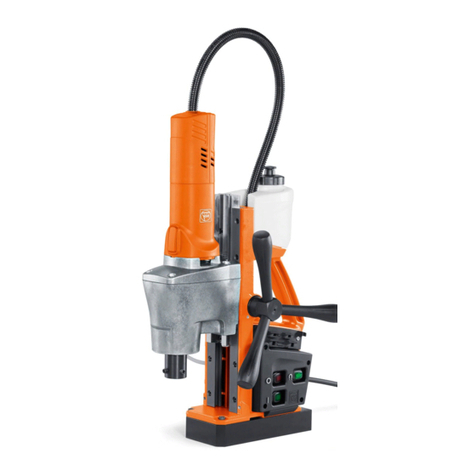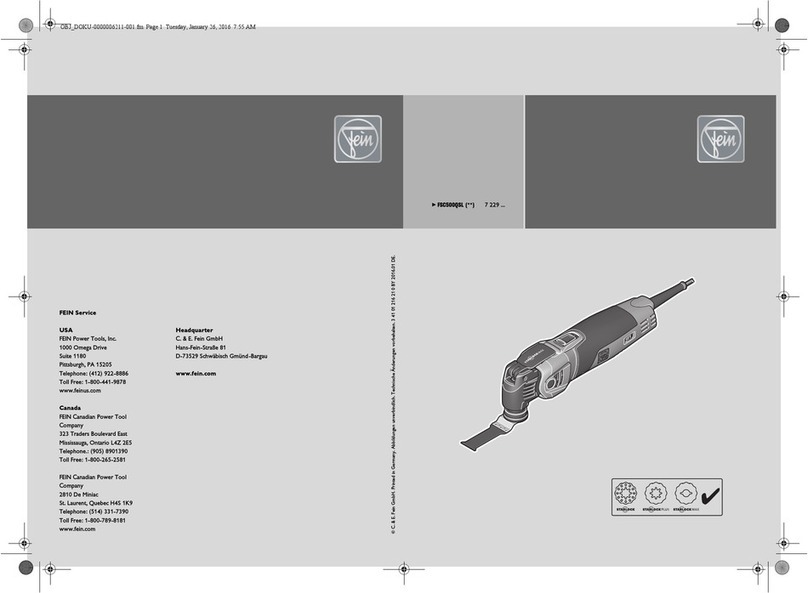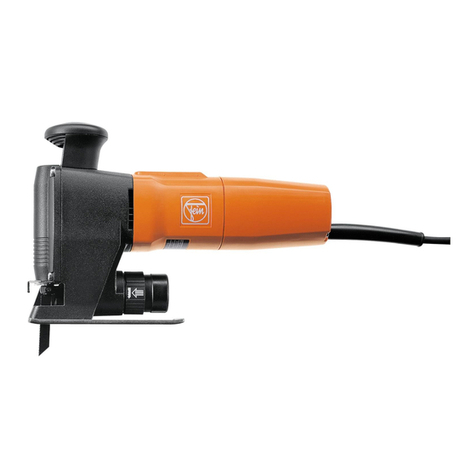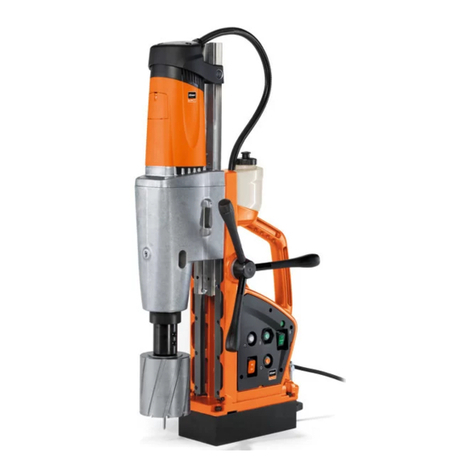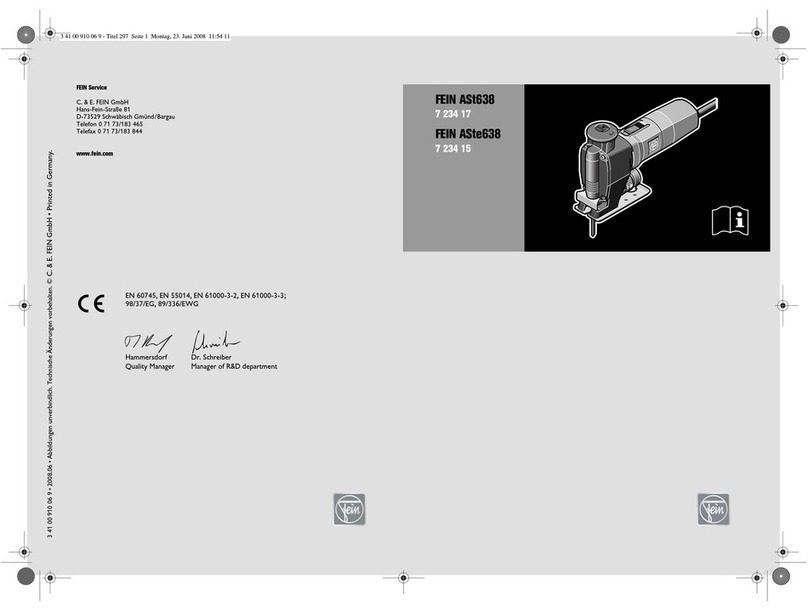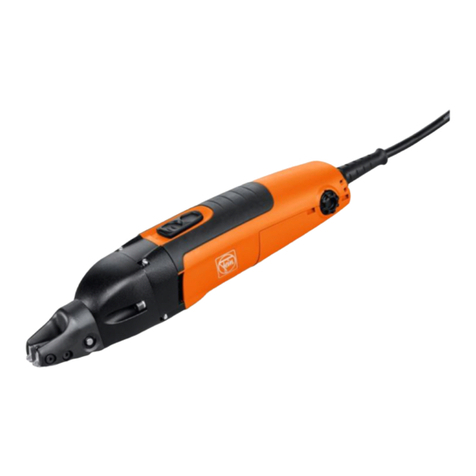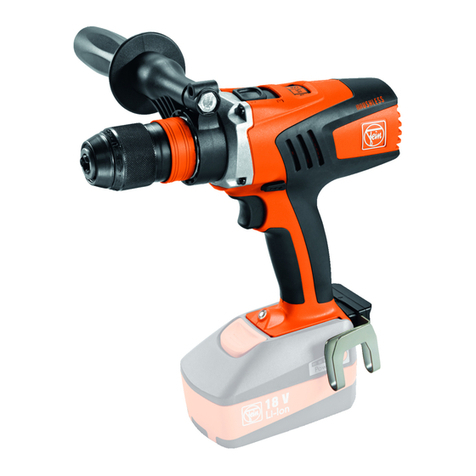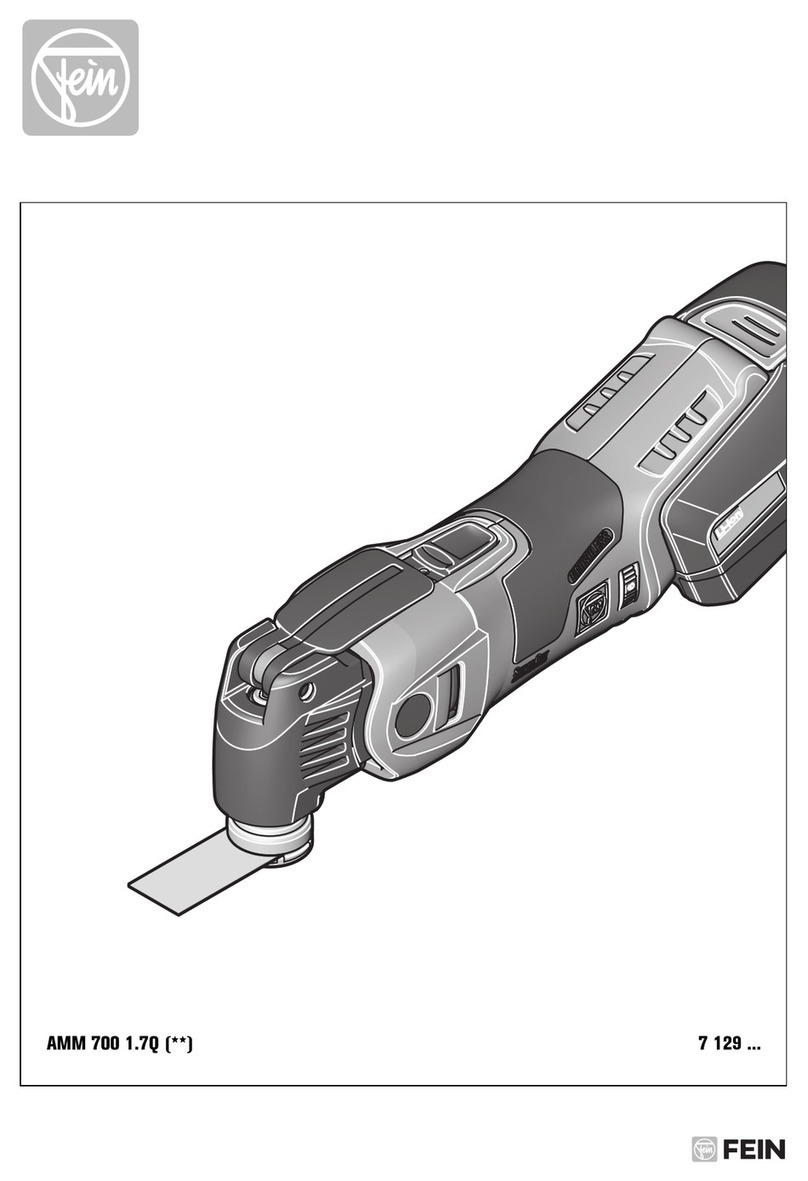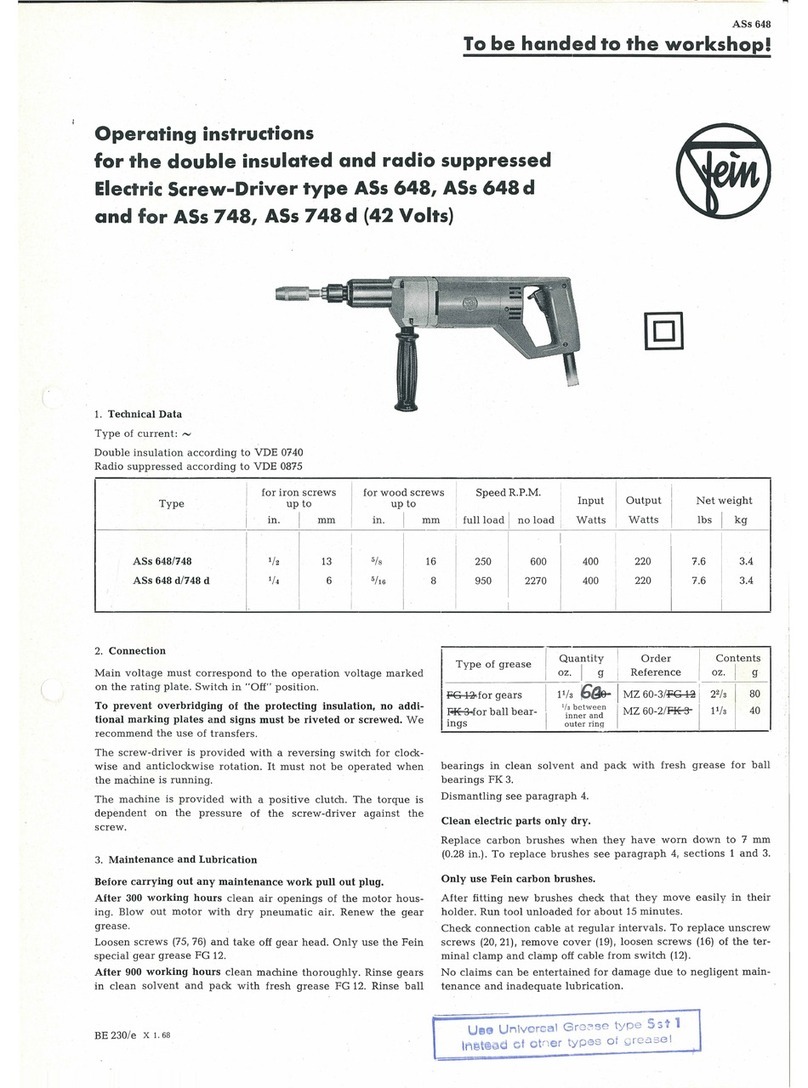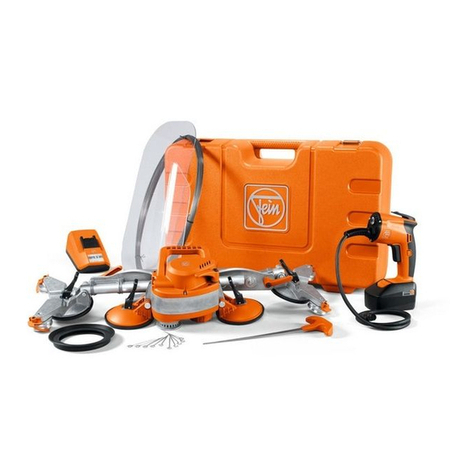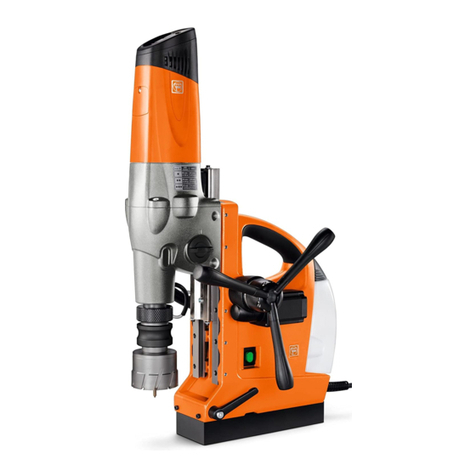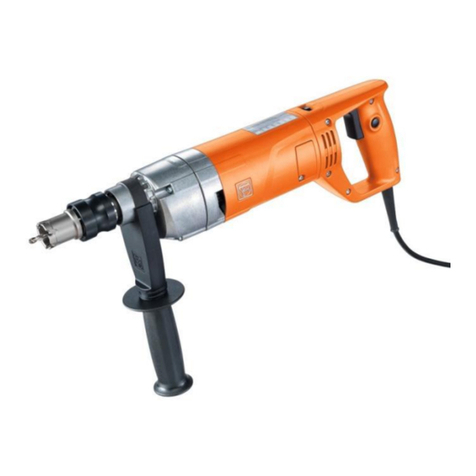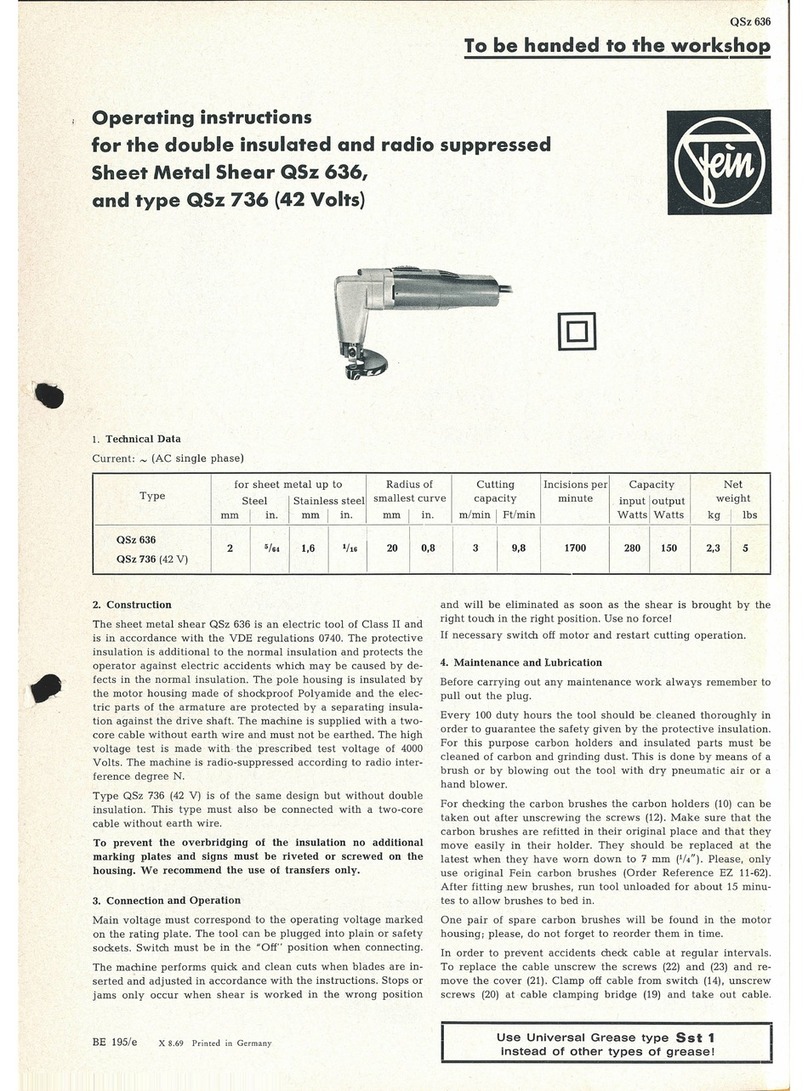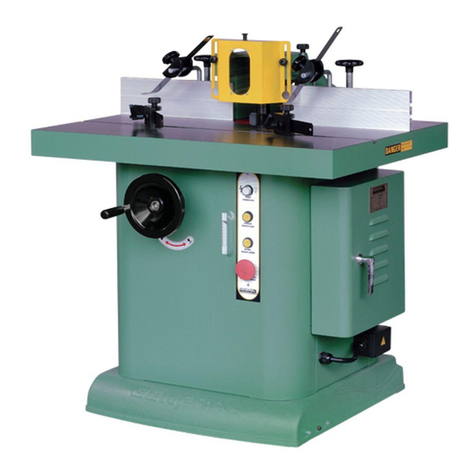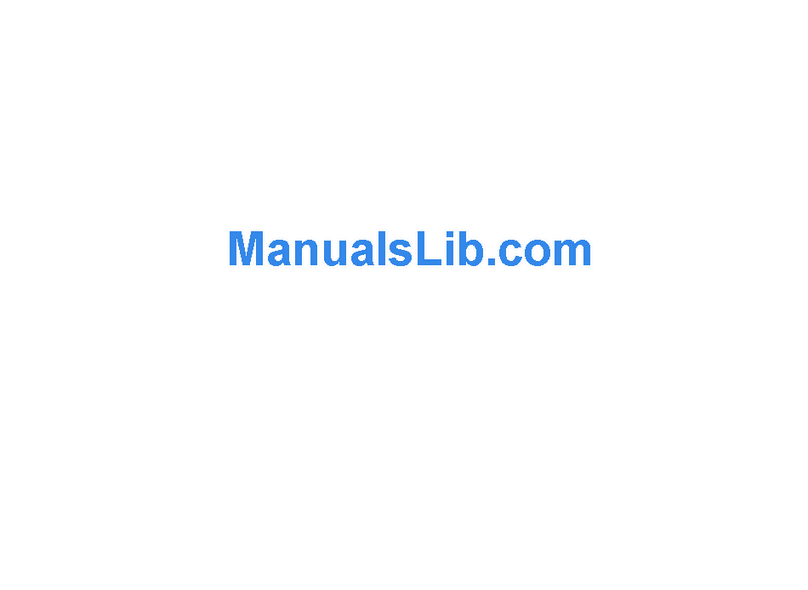
10 1 88 50 307 06 9 X 04.03
7 232 32/BLK 1.6
Einzelteile Component Parts Pièces détachées
Teil-Nr. Bestellnummer
Part.No. Order Reference Benennung Description Désignation
No. Référence
10 3 19 01 109 01 8 1 Motorgehäuse motor housing carter moteur
20 3 28 16 051 00 1 1 Schaltstange switch rod bielle
30 3 28 05 152 00 9 1 Schaltschieber trigger, ass. ens. coulisse de manœuvre
40 5 1 272 004 11 9 1 Polpaket mit Wicklung, pole housing with winding, stator bobiné,
110-120 V 110-120 V 110-120 V
5 1 272 004 23 5 1 Polpaket mit Wicklung, pole housing with winding, stator bobiné,
230-240 V 230-240 V 230-240 V
50 4 30 70 014 00 0 2 Ejot-PT-Schraube screw "Ejot-PT" vis "Ejot-PT"
60 3 14 28 114 00 8 1 Luftleitring air conducting ring bague de guidage de l'air
70 3 07 12 087 01 5 2 zus.ges. Bürstenhalter carbon holder, ass. ens. porte-balais
75 3 07 17 193 00 0 2 Steckverteiler distributor for plug-in connections distributeur pour connecteurs à fiches
80 3 07 11 129 00 9 2 Kohlebürste carbon brush balais-charbon
90 4 30 70 015 00 4 2 Ejot-PT-Schraube screw "Ejot-PT" vis "Ejot-PT"
100 3 07 01 060 00 0 1 Ausschalter, 2-polig switch, 2-poles interrupteur, bipolaire
120 3 07 22 178 01 6 1 Kondensator capacitor condensateur
130 3 24 31 026 00 9 1 Kabelklemmstück cable clamping piece serre-câble
140 4 30 70 001 00 6 2 Ejot-PT-Schraube screw "Ejot-PT" vis "Ejot-PT"
150 3 24 27 108 01 6 1 zus.ges. Deckel cover, ass. ens. couvercle
160 4 30 70 003 00 3 1 Ejot-PT-Schraube screw "Ejot-PT" vis "Ejot-PT"
170 4 30 70 016 00 7 2 Ejot-PT-Schraube screw "Ejot-PT" vis "Ejot-PT"
180 3 07 07 373 01 4 1 z.g. Kabel (230 V) cable ass. (230 V) ens. câble (230 V)
3 07 06 323 01 8 1 z.g. Kabel (110 V) cable ass. (110 V) ens. câble (110 V)
182 3 07 07 381 01 6 1 z.g. Kabel, 110 V, GB) cable ass. (110 V, GB) ens. câble (110 V, GB)
183 3 07 07 335 01 0 1 z.g. Kabel (230 V, CH) cable ass. (230 V, CH) ens. câble (230 V, CH)
185 3 07 07 345 01 9 1 z.g. Kabel (110-120 V, CA) cable ass. (110-120 V, CA) ens. câble (110-120 V, CA)
190 3 14 13 164 00 9 1 Schutzschlauch protecting sleeve gaine protectrice
3 14 13 142 00 9 1 Schutzschlauch (110-120 V,CA) protecting sleeve (110-120 V, CA) gaine protectrice (110-120 V, CA)
250 5 3 272 005 11 5 1 Anker kpl. mit Wicklung, armature with winding, induit bobiné,
110-120 V, 6 Zähne 110-120 V, 6 dents 110-120 V, 6 dents
5 3 272 005 23 1 1 Anker kpl. mit Wicklung, armature with winding, induit bobiné,
230-240 V, 6 Zähne 230-240 V, 6 dents 230-240 V, 6 dents
300 4 17 01 001 25 7 2 Rillenkugellager grooved ball bearing roulement à billes rainuré
310 3 26 12 125 00 0 1 Dichtungsring packing ring bague d'étanchéité
320 3 29 01 047 00 0 2 Schutzgitter protective grating grille protectrice
330 4 30 70 024 00 9 4 Ejot-PT-Schraube screw "Ejot-PT" vis "Ejot-PT"
390 3 15 06 349 01 8 1 zus.ges. Zwischenlager intermediate bearing ass. ens. palier intermédiaire
410 4 02 42 006 00 7 1 Zylinderstift cylindrical pin tige cylindrique
420 4 17 01 202 01 8 1 Rillenkugellager grooved ball bearing roulement à billes rainuré
430 3 36 57 163 00 4 1 Stirnrad, 29 Zähne spur wheel, 29 teeth roue dentée, 29 dents
440 3 37 57 079 00 4 1 Stirnradwelle, 15 Zähne spur wheel shaft, 15 teeth arbre de roue dentée droite, 15 dents
450 4 17 06 034 00 1 1 Nadellager needle bearing roulement à aiguilles
460 3 24 08 185 00 9 1 Scheibe disc rondelle
470 4 17 01 010 03 2 2 Rillenkugellager grooved ball bearing roulement à billes rainuré
480 3 05 01 342 00 7 1 Distanzhülse spacer sleeve douille d'écartement
490 4 26 16 027 00 9 2 Sicherungsring securing ring bague de sécurité
500 3 34 05 045 00 7 1 Exzenterwelle eccentric shaft arbre d'excentrique
510 3 36 57 168 00 1 1 Stirnrad, 41 Zähne spur wheel, 41 teeth roue dentée, 41 dents
520 4 02 23 016 00 5 1 Passfeder fitting key ressort d'ajustage
530 4 26 16 006 00 7 1 Sicherungsring securing ring bague de sécurité
590 3 15 08 244 01 7 1 zus.ges. äußeres Lager outer bearing, ass. ens. palier extérieur
610 3 01 09 146 00 5 1 Stößel plunger coulisseau
620 3 01 09 147 00 9 1 Stößel-Unterteil lower part of plunger partie inférieure du coulisseau
630 4 17 09 001 00 8 1 Rolle roller rouleau
640 3 23 05 016 00 8 1 Pleuel connecting rod bielle
650 4 17 15 049 00 7 1 Nadelkranz needle bearing roulement à aiguilles
660 6 36 02 048 00 4 1 Stempel punch poinçon
665 6 36 02 048 01 3 1 Set (Stempel und Matrize) set (punch and die) set (poinçon et matrice)
670 3 01 09 154 00 7 1 Matrizenträger für Trapez- und die holder, assembly for sheet ens. porte-matrice pour tôle
Wellblech with trapezoidal corrugations and trapézoïdale et tôle ondulée
corrugated sheet
680 3 01 09 141 00 3 1 Matrize die matrice
690 4 30 13 050 00 0 1 Schraube screw vis
700 4 06 12 040 00 3 1 Runddichtring sealing ring bague d'étanchéité
710 4 20 15 064 00 5 1 Überwurfmutter screwed cap écrou à raccord
720 4 06 12 041 00 2 1 Runddichtring sealing ring bague d'étanchéité
Listenmäßiges Zubehör Accessories as listed Accessoires suivant liste
6 29 07 004 00 5 1 Stiftschlüssel, SW 6 mm socket head wrench, clé pour vis à six pans creux
opening 6 mm ouv. 6 mm
Zubehör Accessories Accessoires
3 01 09 151 00 2 1 Matrizenträger für Tafel- und die holder, assembly for profiled ens. porte-matrice pour plaque de tôle
Wellblech and corrugated sheet et tôle ondulée
